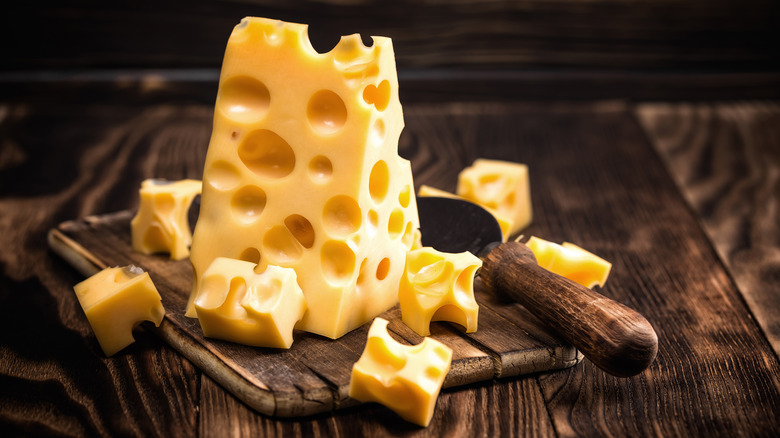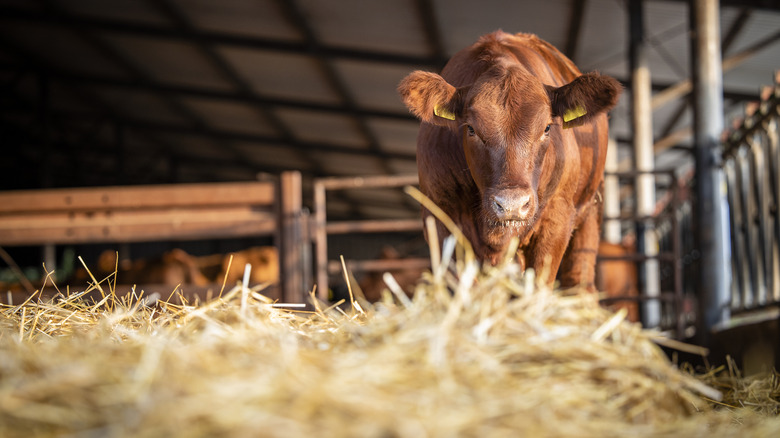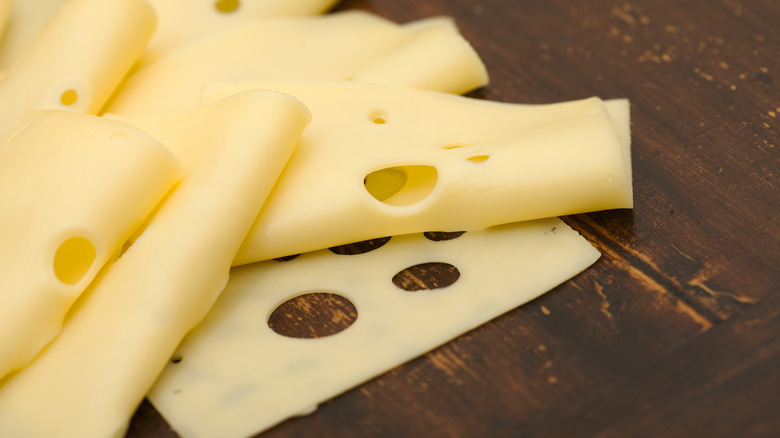Why Swiss Cheese Is So Holey
When it comes to cheese, Swiss is is considered the quintessential fromage thanks to its popularity in cartoons, books, and other media. Known as Emmental in its native Switzerland, it's one of the many types of cheese available on the market. Even so, have you ever wondered what gives this cheese its famous holes?
Turns out, the holes, known as 'eyes' in the cheese industry, are caused by a bacteria called propionibacterium freudenreichii. "This bacteria ferments lactic acid and produces carbon dioxide," scientist Mark Johnson of the Center for Dairy Research at the University of Wisconsin explained to Reader's Digest. "Carbon dioxide collects in certain spots in the cheese and produces a large bubble, or eye." This process is also what gives the cheese its signature sweet and nutty flavor.
American chemist William Clarke was the first person to attribute the porous appearance of Swiss cheese to bacteria, publishing his findings in a 1917 edition of the "Journal of Dairy Science." What he could never quite pinpoint was the exact origin of the bacteria itself.
Hay is the culprit
Many decades later, the holes began to mysteriously disappear from Emmental cheese, prompting scientists to do further research. One of those scientists was Walter Bisig at Agroscope, a government-run research center in Switzerland, who told The New Yorker in 2015, "The farmers told us, and we saw it in the cheese-association grading reports: there were just fewer holes." In search of an answer, Bisig hypothesized that the dwindling holes actually came down to a surprising element — hay, or rather, a lack thereof.
Emmental was traditionally made from milk collected by hand in barns, where large quantities of hay particles would find their way into open milking buckets. Bacteria would then form around the particles, causing the production of carbon dioxide and ultimately, those signature Swiss cheese holes.
Bisig and his fellow scientists made this discovery by introducing different amounts of microscopic hay particles across purified milk at the beginning of the cheese-making process, then tracking its progress. The final results were clear: the more hay particles that were used, the more holes appeared. They also found that more hay particles equated to smaller holes, and vice versa.
Keeping Swiss cheese holey
With the advent of modern cheese making and more efficient practices, hay particles have been largely removed from the equation. In fact, the case of the disappearing holes started around the same time that farmers began to develop better mechanisms for making cheese, in accordance with European Union standards.
The Emmental of today still contain holes, but some Swiss cheese have no holes. While there is a debate about whether or not hay should be purposefully reintroduced back into the milk used to make Emmental, there are other elements, including grass and dirt, that can make their way into the milk in their microscopic form to help promote bacteria.
Swiss cheese in the U.S. undergoes pasteurization, a process that kills bacteria, unlike Emmental in Switzerland, which is made from raw cow's milk. Cheesemakers here must therefore add props bacteria back into the cheese mixture, using cultivated bacteria to create the yellow wedge-covered in holes that you know and love.


